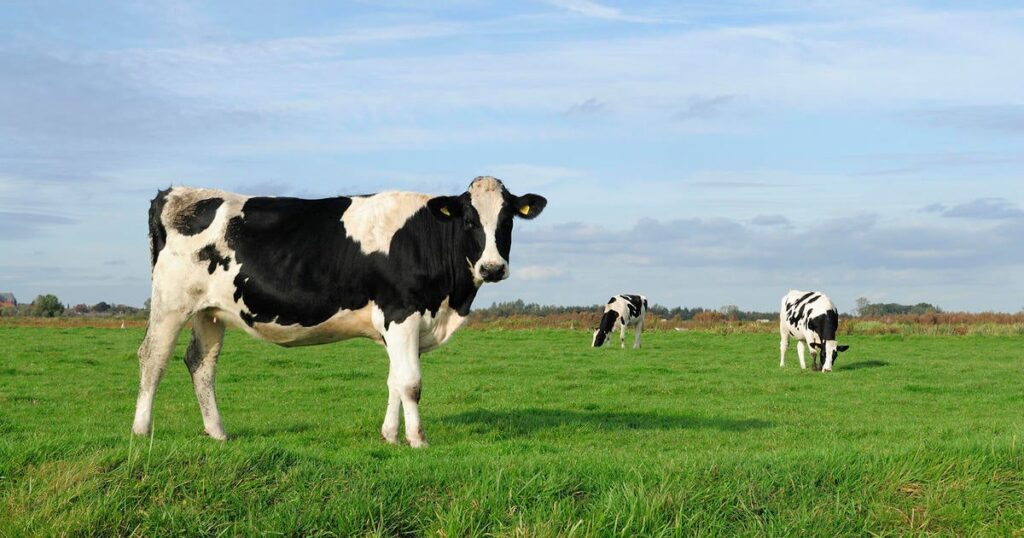
At least four cattle herds in Nevada have tested positive for a strain of H5N1 bird flu never before seen in cows, state agriculture officials confirmed Wednesday, and respiratory symptoms like coughing and sneezing have been reported.
That bird flu strain, called D1.1 by scientists, was also linked to a fatal human case in Louisiana last year after exposure to sick birds. The D1.1 strain has emerged in recent months to dominate infections in wild birds and poultry flocks across North America.
Symptoms seen in humans infected by D1.1 have been more severe than the previous bird flu strain that has been spreading in cows. That strain, called B3.13, has led to only mild symptoms, like pink eye and fever, in humans infected after contact with sick cows.
Research suggests that B3.13 is less likely to result in severe disease for humans, unlike other bird flu strains overseas. The risk is different for other animals, like pet cats, which have frequently died after exposure to food and milk contaminated with B3.13.
The discovery of the D1.1 bird flu strain’s spread in cows also upends previous theories floated by U.S. health and agriculture officials that the spillover of the virus into cows from wild birds was a rare, one-off event.
All cases of bird flu in cows since a spillover in Texas in late 2023 had previously been linked only to B3.13, which officials have cited as evidence that new variants of the virus were not repeatedly spreading into cows from birds.
« The detection does not change USDA’s HPAI eradication strategy, » the U.S. Department of Agriculture’s Animal and Plant Health Inspection Service said Wednesday, citing the federal government’s plan to try to stop the unprecedented surge of highly pathogenic avian influenza, or HPAI, in recent years.
In addition to the human health threat posed by the virus, an unprecedented toll claimed by spillovers of the D1.1 from wild birds into chickens has driven up egg prices across the country.
Nearly a thousand cow herds have been confirmed infected by bird flu to date, the USDA says, with detections across 16 states. Most recent cases have been in California.
The four new cattle herds infected by D1.1 were reported in Nevada’s Churchill County, a spokesperson for the state’s Agriculture Department said.
Bird flu was also reported in December from a herd in the state’s Nye County, though those cows ended up testing positive for the B3.13 strain of the virus.
The Nevada spokesperson said two additional herds in Churchill County have also now been placed under quarantine, pending laboratory results from the USDA.
« Symptoms of H5N1 D1.1 have been similar to the detections of B3.13. These include fever, reduced feed consumption, reduced milk production and mild respiratory signs (coughing, sneezing, runny nose), » Ciara Ressel, Nevada Agriculture Department spokesperson, said of the cows’ symptoms.
Those herds were confirmed to have been infected as the result of a state investigation, the USDA said, after a silo that had received milk from the cows tested positive for the virus.
« USDA APHIS continues to work with the Nevada Department of Agriculture by conducting additional on-farm investigation, testing, and gathering additional epidemiological information to better understand this detection and limit further disease spread, » the USDA said.
It is unclear how many workers in the state may have been exposed to the D1.1 strain after working with those sick cows.
A spokesperson for Nevada’s health department referred a request to the Central Nevada Health District, which did not immediately respond to a request for comment.
The Centers for Disease Control and Prevention says that 40 out of the 67 confirmed human bird flu cases since 2024 have been linked to exposure to dairy cows sick with the virus. Most of the others have been the result of exposure to infected poultry.
In a news release last month, Nevada’s Agriculture Department said the CDC « maintains that the risk to humans remains low, » and that it was « working with state and county health officials to protect human health and safety. »
A spokesperson for the CDC did not immediately respond to a request for comment when asked if D1.1’s spillover changes that risk assessment.
« It is critical that animal health biosecurity practices are enhanced to help prevent the spread of disease and protect animal and worker safety, » state veterinarian Peter Rolfe said.
